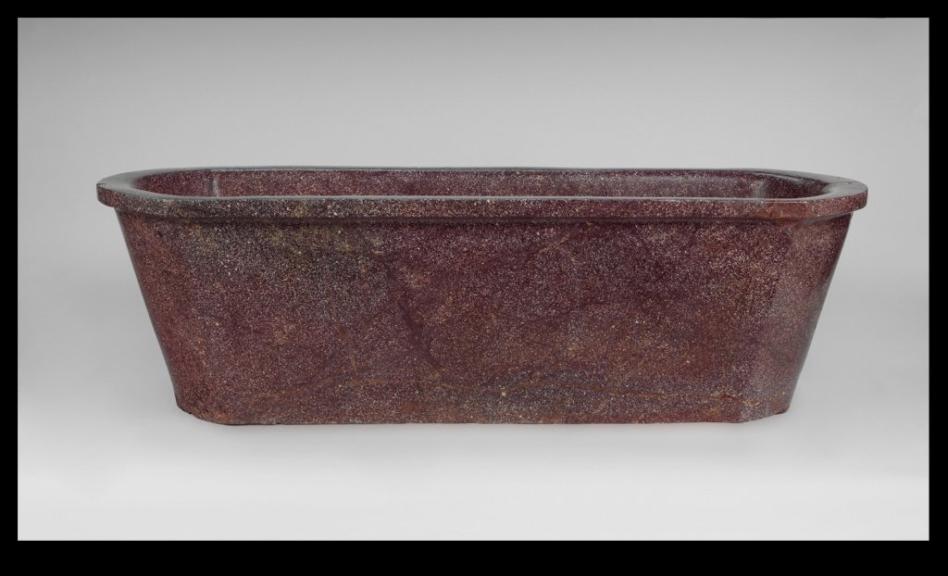
Object Title
Porphyry basin
Measurements
Height 27 1/2 in. (69.9 cm); length 72 1/8 in. (183.2 cm); width 19 in. (48.3 cm)
Creation Date
2nd-3rd century A.D.
Credit Line
Gift of Lewis M. Dubroff, on the occasion of the reinstallation of the Greek and Roman galleries, 2009
Museum Name
Culture
Country of Origin
Object Type
Materials / Techniques
Object URL
http://www.metmuseum.org/Works_of_Art/collection_database/greek_and_roman_art/porphyry_basin//objectview.aspx?OID=130016927&collID=13&dd1=13
Provenance Information
Sold at auction by Sotheby's New York, December 17, 1992, lot 153, consigned by Barbara Piasecka Johnson; acquired by Lewis M. Dubroff, Manlius, New York. The work has been on loan to The Metropolitan Museum of Art from Mr. Dubroff since 1993. Mr. Dubroff donated the work to The Metropolitan Museum of Art in 2009.
Exhibition Information
The work was on display in The Metropolitan Museum of Art’s Roman gallery from 1994 until 2001 and, following the renovation of those galleries, the work has been on display in The Metropolitan Museum of Art’s new Roman court since 2007.
Publication Information
The work was published in the Sotheby’s auction catalogue in 1992.
Malgouyres, Philippe and Clément Blanc-Riehl. 2003. Porphyre. La pierre pourpre des Ptolémées aux Bonaparte. Paris: Réunion des musées nationaux-Grand Palais, p. 89, fig. 41.
Lightfoot, Christopher S. 2007. "Recent Acquisitions, A Selection: 2006–2007." The Metropolitan Museum of Art Bulletin, 65(2): p. 9.
Del Bufalo, Dario. 2012. Porphyry. Red Imperial Porphyry. Power and Religion. Turin: Umberto Allemandi & C, no. L19, p. 166.
Malgouyres, Philippe and Clément Blanc-Riehl. 2003. Porphyre. La pierre pourpre des Ptolémées aux Bonaparte. Paris: Réunion des musées nationaux-Grand Palais, p. 89, fig. 41.
Lightfoot, Christopher S. 2007. "Recent Acquisitions, A Selection: 2006–2007." The Metropolitan Museum of Art Bulletin, 65(2): p. 9.
Del Bufalo, Dario. 2012. Porphyry. Red Imperial Porphyry. Power and Religion. Turin: Umberto Allemandi & C, no. L19, p. 166.
Section of the AAMD Guidelines relied upon for the exception to 1970
Cumulative facts and circumstances
Explain why the object fits the exception set forth above
This work has provenance established to at least 1992 when the work was published and offered for sale at public auction, and the work was published again in 2003. The work has been exhibited publicly from 1994 to 2001 and from 2007 to the present date. The work is a rare example of Roman porphyry sculpture that has escaped reuse or confinement in a medieval building and would add significantly to The Metropolitan Museum of Art’s collection.